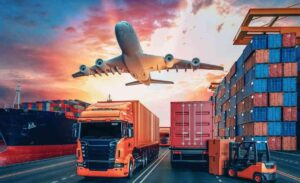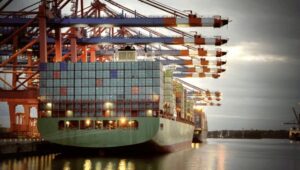For businesses venturing into international trade, navigating the world of shipping can be a daunting task. When it comes to transporting large quantities of goods, Full Container Load (FCL) shipping from China to Panama emerges as a reliable and efficient solution.
FCL shipping involves utilizing an entire container exclusively for your cargo. This method offers several advantages over alternative options:
- Cost-Effectiveness: For large shipments, FCL shipping often translates to lower costs per unit compared to Less Than Container Load (LCL) shipping, where you share container space with other businesses.
- Enhanced Security: Your cargo enjoys the sole occupancy of the container, minimizing the risk of damage or loss due to handling by multiple parties.
- Streamlined Logistics: FCL shipments require less handling at ports, leading to faster processing times and reduced risk of delays.
- Flexibility: A wide variety of container sizes are available to accommodate your specific cargo volume.
FCL Shipping Process Step-by-Step

Here’s a breakdown of the typical FCL shipping process from China to Panama:
- Contact a Freight Forwarder: A freight forwarder acts as your intermediary, managing all aspects of the shipment, from booking space on the vessel to ensuring customs clearance.
- Plan and Book: Discuss your cargo details with your freight forwarder, including weight, dimensions, and required container size. They will then secure container space and schedule the shipment.
- Packing and Inland Haulage: Pack your goods securely within the container, adhering to weight distribution guidelines. Arrange inland transportation to deliver your cargo to the designated port in China.
- Customs Clearance: Your freight forwarder will handle the customs clearance process in China, ensuring all necessary documentation is in order.
- Ocean Freight: The container is loaded onto a vessel bound for Panama. Transit times will vary depending on the chosen route and port of destination.
- Delivery and Customs Clearance (Panama): Upon arrival in Panama, your freight forwarder will manage customs clearance and arrange onward inland transportation to your final destination.
FCL Shipping from China to Panama: Route and Transit Times
The most common route for FCL shipping from China to Panama involves traversing the Pacific Ocean. Depending on the specific origin and destination ports, transit times can range from 20 to 30 days. Here are some factors that can influence transit times:
- Chosen Port: Ports on the west coast of China, such as Shanghai or Ningbo, offer faster routes compared to those on the east coast. Similarly, Panamanian ports like Balboa or Cristobal on the Pacific side lead to quicker deliveries.
- Ocean Carrier: Different shipping lines offer varying schedules and routes, impacting transit times.
- Congestion: Port congestion can lead to delays in loading and unloading, extending the overall journey.
Choosing the Right Shipping Container for Your FCL Shipment

Selecting the appropriate container size is crucial for optimizing costs and ensuring efficient utilization of space. Here’s a breakdown of the most common FCL container options:
- 20-foot Dry Container (20GP): Ideal for smaller shipments or cargo with specific weight limitations.
- 40-foot Dry Container (40GP): The industry standard for medium-sized shipments, offering a balance between cost and capacity.
- 40-foot High Cube Container (40HC): Provides additional height compared to the standard 40GP, suitable for bulky but relatively lightweight cargo.
It’s recommended to consult with your freight forwarder to determine the most cost-effective container size based on the volume and weight of your shipment.
FCL Shipping Costs and Factors that Affect Them
The overall cost of FCL shipping from China to Panama is influenced by several factors:
- Origin and Destination Ports: The distance between ports significantly impacts ocean freight charges.
- Container Size: Larger containers typically incur higher costs.
- Fuel Surcharges: Ocean carriers may impose fuel surcharges based on current fuel prices.
- Inland Haulage Costs: Costs associated with transporting your cargo to and from the ports in China and Panama.
- Customs Clearance Fees: Charges levied by Panamanian authorities for processing your shipment.
To obtain an accurate quote, it’s best to contact a reputable freight forwarder who can provide a comprehensive breakdown of all applicable costs.
Documentation and Customs Requirements for FCL Shipping

Successful FCL shipment to Panama hinges on having the necessary documentation in order. Some key documents include:
- Commercial Invoice: A detailed list of your goods, including product descriptions, quantities, and unit values.
- Packing List: An itemized breakdown of your shipment’s contents, including weight and dimensions for each item.
- Bill of Lading (BOL): A legal document issued by the ocean carrier serving as a receipt for your cargo and a contract of carriage.
- Export Declaration: A government document required by Chinese authorities to authorize the export of your goods.
- Panamanian Import License: Certain goods may require an import license from Panamanian authorities. It’s crucial to consult with your freight forwarder to determine any specific licensing requirements for your shipment.
Tips for a Smooth FCL Shipping Experience
To ensure a seamless FCL shipping experience from China to Panama, consider these valuable tips:
- Plan Ahead: Book your container well in advance, especially during peak shipping seasons.
- Accurate Documentation: Ensure all documentation is complete and error-free to avoid delays at customs.
- Proper Packaging: Invest in high-quality packing materials to protect your cargo during transport.
- Insurance: Consider cargo insurance to mitigate potential risks of loss or damage during the journey.
- Communication is Key: Maintain clear communication with your freight forwarder throughout the shipping process.
By following these tips and leveraging the expertise of a reliable freight forwarder, you can navigate FCL shipping from China to Panama with confidence and efficiency.
FCL Shipping vs. LCL Shipping: A Comparison

For businesses with smaller cargo volumes, Less Than Container Load (LCL) shipping might be a viable alternative. Here’s a breakdown of how FCL and LCL shipping compare:
| Feature | FCL Shipping | LCL Shipping |
|---|---|---|
| Container Usage | Entire container dedicated to your cargo | Shared container space with other businesses’ cargo |
| Cost per Unit | Generally lower for large shipments | Generally higher due to shared container space |
| Security | Enhanced security as cargo occupies the container | Increased risk of handling damage due to multiple parties |
| Speed | Faster processing times due to less handling | Potentially slower due to consolidation processes |
| Flexibility | Choice of container sizes to optimize space | Limited flexibility as you share container space |
Ultimately, the optimal shipping method depends on your specific needs. FCL shipping offers cost-effectiveness, security, and speed for larger shipments, while LCL shipping might be more suitable for smaller cargo volumes.





